What does a good computing classroom look like?
Space matters
In September 2014 (as in a couple of weeks) the new Computing curriculum will come into play in schools in England. Basically this means that ICT as a subject will be replaced by Computing and that students from the age of five will have the opportunity to learn an exciting and powerful new subject.
There has been a lot of discussion on how to prepare for this in terms of teacher training. It’s vitally important and it’s why we run Picademy for example. But as the subject matures we also need to start thinking about what an effective computing classroom looks like and how to set it up so that students can get the most from the subject.
Teaching and learning spaces
My primary school was not like others. Pupils were free to roam about and do what they wanted. It was an interesting educational experiment. I now know what happens when pupils are responsible for their own education: they smear their faces with woad (well, Crayola indigo warmed up on the radiator) and then scuttle up trees. (Student voice, I’m looking at you.)
There were no classrooms in this school of the future, just “bays”—quasi-rooms with no walls, opening onto a central area. It was a terrible environment for most subjects: it’s tricky to concentrate on improper fractions or ‘How come the moon doesn’t fly off into space?’ when the bay across the way is thrashing a class set of percussion instruments like a colony of chimps pummelling the corpse of dead hyena.
So I’ve never been a fan of “learning spaces”. Even typing the phrase makes me start rocking gently and keening. And yet learning spaces are exactly what the new English Computing programme of study needs. Walk into a standard ICT suite in any secondary school in the land and you will be stared down by banks of unblinking monitors lining the walls and the central reservations.
This is not a learning room, it’s a teaching room. It’s set out so that teachers can monitor the monitors (and monitor the monitor monitors if they are lucky enough to have them) and control what the students are doing with their hermetically sealed PCs. What they are typically doing, given the closed nature of hardware and software in most of these suites, is usually pretty anodyne. It should come as no surprise that the word “suite” comes from the old French meaning “a group of identically clad followers”.
This new-fangled ICT thing: it’s a slippery slope and no mistake
So what the typical student is doing in the typical ICT suite is … ICT. Which is great! Good teachers are running rich and exciting and useful ICT lessons under the old programme of study (PoS). Outstanding teachers have been including elements of computing into their lessons for years (contrary to the belief of those who had never actually read it, the old PoS was pretty flexible and adaptable). But all too often a school’s ICT policy is that the subject should be safe. Not inspiring or useful or thought provoking. Just safe.
Which would be lovely if this meant ‘safe’ for the kids, but more often than not it means ‘safe’ for the senior management. ICT isn’t to be trusted: kids obviously needed watching because they might do bad things. Like play games. Or watch games on YouTube. Or write games and pretend to be testing them. Students have even been known to flip screens upside down using hot-keys; or draw rude pictures in Paint and set them as the desktop of their neighbour’s machine; or stick a Post-it on the bottom of the teacher’s mouse; or Google “funny gifs of cats with glok’s and a bom lol!”
Hence this urge, especially amongst techno-wary management, to constantly monitor and repress and interfere. Technology that enlightens and frees and encourages experimentation is the same technology that is potentially seditious and disruptive and encourages hacking (hurrah!). So it’s sad but unsurprising that in the current climate schools lock down PCs and stop students from messing about. A more open environment doesn’t require lots of time and money (two big barriers to change in schools) but it does need thoughtful policies and a desire to change.
Would you like a handful of magic beans with that interactive whiteboard sir?
Of course, if all you want to do is to create things on a screen, then a bank of proprietary PCs does the job (though installing some open source software like Inkscape, Audacity, LibreOffice, Firefox and GIMP wouldn’t hurt). But things have changed since the late 90s when IT quietly became ICT and a new curriculum came in: prescribed hardware and proscribed software just aren’t good enough now that Computing is back (in retrospect, they weren’t even fit for purpose then). A generic classroom stifles creativity and if Computing is one thing, it’s creative.
Looking back at my ten years in an ICT classroom it’s clear to me that most ICT suites are the 21st century equivalent of the shiny new language labs that popcorned into secondary schools in the late 70s: shiny and exciting but ultimately a bit rubbish. My old stock cupboard is full of unused smoke-and-mirrors ICT kit that was sold as the next big thing but turned out to be technology for technology’s sake. (We’re very fond of the old magic beans thing in education, but that’s another blog post entirely.) Technology by itself rarely improves learning. Good teachers in stimulating environments always do.
A new classroom for the new programme of study
For the new Computing programme of study let’s give the students the freedom to tinker and to hack and to experiment and to collaborate. And let’s give them the space and the tools to do this. PCs still have a place of course, but ideally there will be a central table(s) full of electronics, robots, sensors, computers, projects kits, stuff you’ve found in skips, printers, bits and bobs, cutters and a runcible spoon. (And, of course, Raspberry Pis!) Let anyone who wants to play come in at break, lunchtime and after school to mess around. Encourage other subjects to use computing as a creative tool, one they can use in their lessons, and to look at Computing and not say “Whatever” but “Hmmm, that’s interesting…” (Because if Computing is not used across the whole curriculum then we are missing both the point and a huge learning opportunity.)
For this we are going to have to change our ICT rooms from teaching rooms to learning spaces. It’s not a trivial thing and it won’t happen overnight. But if you are offered a new room in which to teach Computing this September, or you get the chance to re-purpose an existing ICT suite, please make it the first thing on your agenda. In fact, make a space like this:
In time, ten years perhaps, computing in schools will be a normal tool for problem solving and creativity. Just a tool to do things in the same way that, on a much smaller scale, a calculator is used today in Maths (although the things you can do are very much cooler and more useful than telling your mate to type in ‘5318008’ and hand it, upside down, to your teacher). In the meantime, let’s get the learning spaces right. The rest will drop into place.
How you can help
We’re currently writing materials on how to set up a computing classroom and we’d like your help. What would your ideal computing space look like and why? What would you like to see in there, how would it be set up and how could the Raspberry Pi Foundation help you with this? We’d love to hear your thoughts on this and the final materials will be published in our resources area. Comments below would be lovely, thanks!



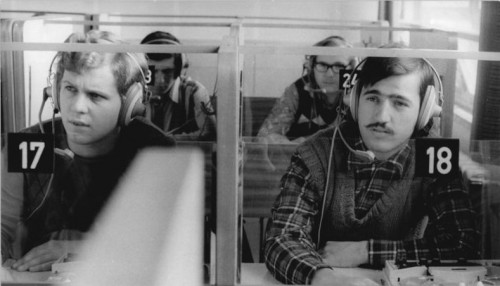
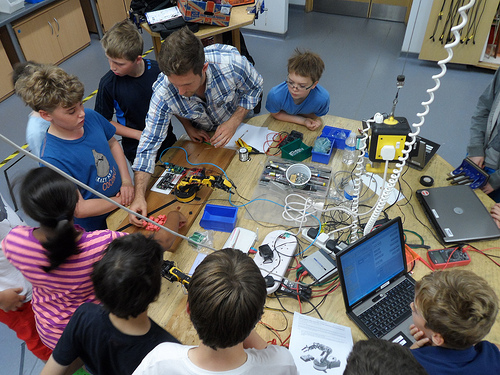

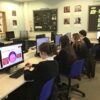


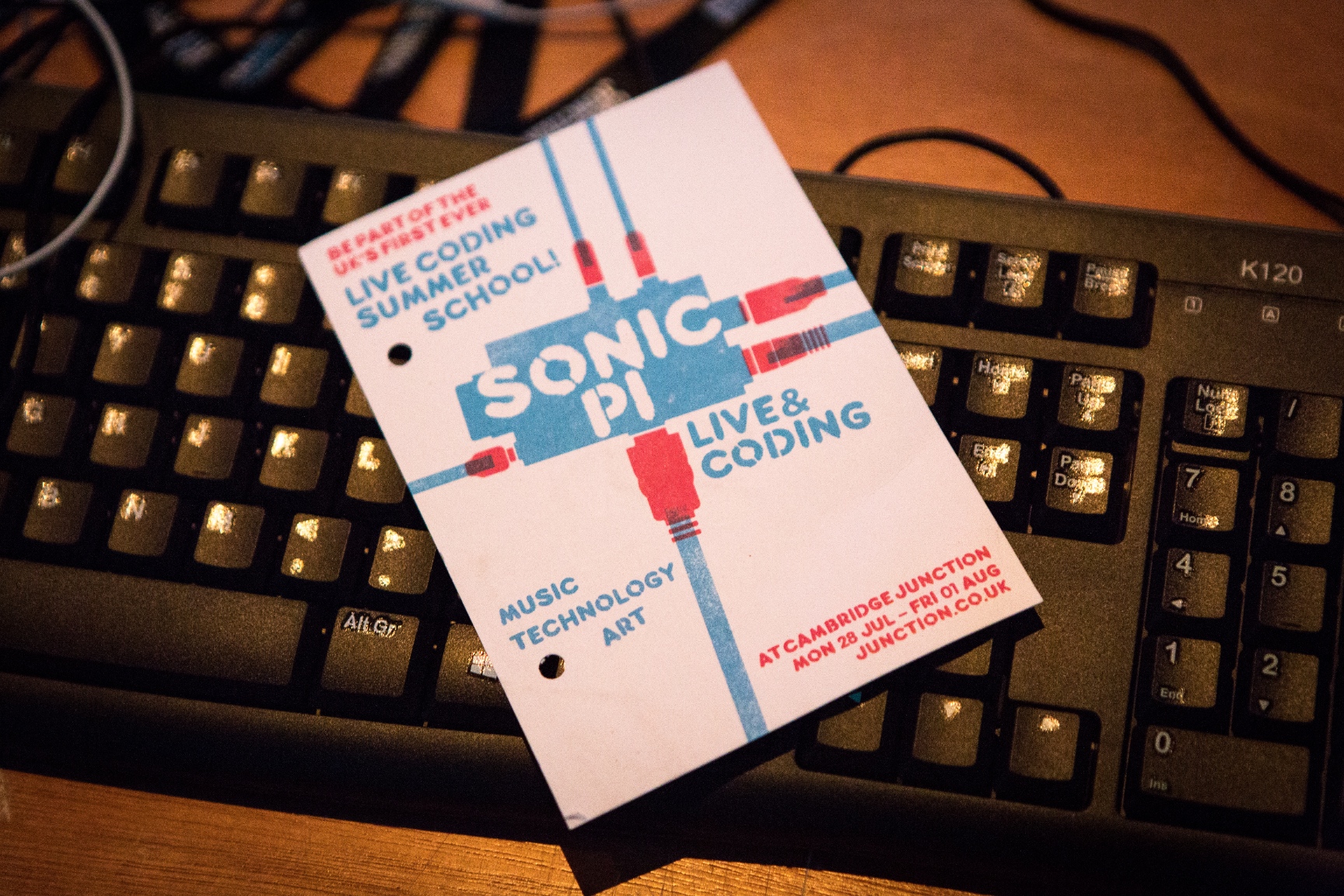
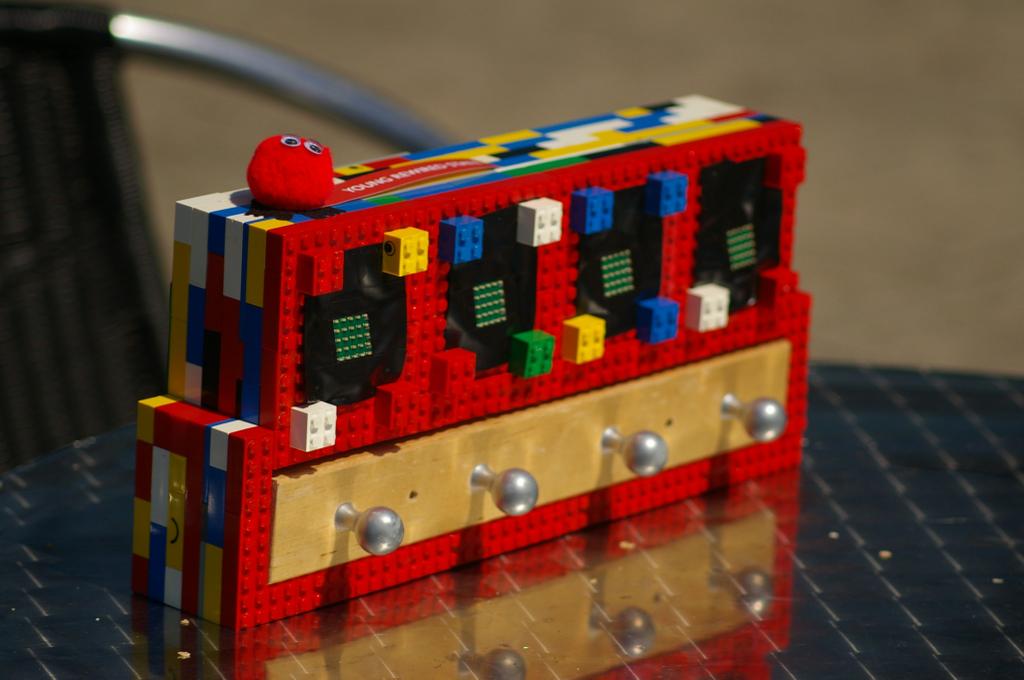
23 comments
KnuckleHead
what a pity the perceptive and pointed writing of this post will eventually be buried by a newer post tomorrow. It needs to be nationally printed on cereal packets for the next 6 months to get through the skulls of those in charge.
when Cambridge starts admitting the primary schoolers it is grooming now, maybe they’ll sit up and take notice
Raspberry Pi Staff Liz Upton
Clive’s arm has been twisted into writing a resource for teachers about this for the resources section too – I agree, it needs to be kept prominent.
Carrie Anne Philbin
Like Clive, this is the change that I would like to see next in our classrooms. Great blog post.
Joe Cutting
I’ve volunteered at code clubs in two different schools. One had a purpose build computer room with desktop PCs in rows.
The other has a trolley full of old laptops which the children use at their usual group tables.
With the PCs in rows there was usually an issue about who was sitting with who. The children all want to sit with their best friends but sometimes this isn’t possible because someone else is sitting there. Several children dropped out of the club after the first time this happened.
Having the children work in groups round a table seems much better, they’re happier because they’re with their mates and more inclined to work together.
Aaron
I am guessing I am not the only one, but what we used to in ICT was to rearrange the keys on the keyboard to spell the names of our teachers, and a range of expletives!
Now if we had been given RasPis and robot arms instead of ECDL (European Computer Driving License) lessons, then I don’t suppose we would have been quite so interested in annoying the teachers :-)
One kid in the year above actually hacked into the network once, and passed all his mates ECDL tests for them if they couldn’t do it. He got “asked to leave” after that (but they still let him take his exams of course).
Michael Horne
Great blog post. It’s a pity, though, that far from creating learning spaces, many schools will choose to create spaces that get them good grades, which may not be the same thing. In my mind, one of the most important things the Pi can give children is ownership. They can be given their own Pis, or at least their own SD card, much like they have their own exercise book. I’d also like to see a lot of self-powered learning with worksheets so they can work at their own pace.
Then, again, I’m not a teacher (for which, in true Raspberry Jamboree fashion, I apologise), so I could be talking out of my anatomy :-)
Atul
This is really good post, thanks for the same.
Schools have been teaching us how to follow rules ( which is good) and can make good employes(which most of us are)……spaces like this (maker spaces) can make good entrepreneurs…..let kids decide what they want…..given them both :)
jbeale
This is a good post! I agree it should be kept prominently available somehow.
jbeale
(and by the way, despite the surname I am no relation to the post’s author- as far as I know!)
kees
I love the suggestion of bringing in any old electronics stuff. For me the most rewarding thing about the raspberry pi is having an excuse to go digging in the boxes at thrift shops etc and (sometimes) succeeding in interfacing anything with a plug to a pi. It’s also a very sly way of teaching a few of my nephews how to use Google and why it is a good idea to have a row of dictionaries etc handy and what the “point” is of libraries in general.
Scot
I think you may be interested in some of the things happening in the Lehi UT area, we have several great examples of this I think. In Lehi High, I take a programming class, that is very much an example of a learning space. Mr.white, the teacher, starts the week explaining a concept to the class, and then lets us loose. He gave us all copies of visual studio express, and xna, then gives the class a week to make whatever they want with the new technique he showed us. Then theres WIT, or the Wasatch institute of technology. WIT is a new high school, with a focus specifically on technology. My cousin signed up for it this year, and it looks very effective. Pretty much the entire school is like one of Mr.Whites classes. We also have UCAS, which is a concurrent enrollment school, I think they mainly focus on networking and IT.
More stuff:
Wit website:
http://www.wasatchinstitute.net/about-us/our-purpose/
Lehi High website, with teacher contact information: http://lhs.alpineschools.org/cte/
Kevin Bowers
Sorry, Clive, where I come from a PoS is NOT a Program of Study. Perhaps we could come up with another way to shorten that particular term? At least until the kiddies’ bedtime?
Jon Colt
As a professional college teacher, I worry about the poisonous influence of “professiomal educators” on the form and structure of teaching.
Most of these people have not a clue as to the best–or even any–way to imart knowledge to small childrens’–or anyone’s–minds.
The only things that matter to these people are flash and glitz; cf. the picture accomanying this post which shows a room full of worktables supporting monitors and computers. that makes for REALLY good PR and really impresses the parents (it is hoped), and shows that these “professionals” REALLY, REALLY know what they’re doing.
There’s no such thing as the ideal computer-training classromm, except one which is led by a computer very-literate teacher with a great imagination, populated, not dominated, by workBENCHES, and the proper equipment to support the needs and dictates of the TEACHERS–who know infinitely more than the ADMINISTRATOR KNOTHEADS, who know nothing and are concerned only with keeping their jobs.
Been there; done that.
clive — post author
As an ICT/Computing teacher** with ten years’ classroom experience that’s why I wrote “Technology by iteself rarely improves learning. Good teachers in stimulating environments always do”.
**I was even REALLY imaginative and computer-literate with a very low KNOTHEAD index: a man with a clipboard said so :D CHEERS!
Jon Colt
This new program’s only teensy problem is geting “…good teachers in stimulating environments…”.
Precisely how is it proposed that THAT be accomplished, with the inmates running the asylum?
Best of luck…
Jeff (fos)
I’ll take one in a cardboard box. Great idea!
John
To Teach computing you have to have something engaging.
I agree it looks like a cross between a hacker space, a code club and my or for that matter Lady Ada’s desk.
A ham radio would feel at home as would a Lego robotics set.
Without a doubt it is a functional engineering workbench complete with laptops and a few desks around for the others in the group to write and test code from with laptops or equivalent.
Dirk
The Foundation has done a tremendous job of bringing back the days of experimentation we lived with our ZX81s and the hours of keyboard fun, when everyone still thought DOS was pretty cool.
But to convince teachers (and network admins) to choose the Raspi over iPad educational programming apps or rows of Windows computers, I think it would help a lot to further simplify Raspi class administration. Allow setup by just preparing a range of scripted SD cards, repaving a Raspi from a laptop (backup user files, put back the “school image” etc), all without having to log in to each Raspi individually, …
Other than that I can only echo what I read already. Put the tools within reach (both physically and cognitively, in the form of accessible instructions) and encourage the discovery of cool stuff by having the kids work in groups and teach each other. Make each class its own mini-jam.
This allows a teacher to do what he/she does best: bring enthusiasm and direction where it is needed and find the right buttons to push for each of the students.
These are exciting times for all involved :-)
Sue Gray
Space! Time! Short of actually acquiring a TARDIS these are the two issues that constantly dog my working days. The two are intertwined – you can’t have one without the other. I have space in my room, not much but sufficient to get a couple of RasPis set up and a FUZE box. They are there, ready, every day and I encourage the use of them whenever possible but…time interferes.
Break is too short and twice a week I have ‘duty’ so can’t be around. Lunch is also short, 50 minutes which translates into barely 40. Many of our pupils arrive and depart on scheduled buses and the option to arrange a lift home is often difficult due to parents’ working hours or the needs of siblings with paid for activities which take priority over “Can I stay and have a go at Raspberry Pi?”
I’ll continue to plug away, I guess that’s ultimately all I can do and hope that the fantastic new curriculum I’m offering (indebted to RasPi Resources!) will spark something, enough to encourage just a few to stay after school and expand their own learning. Inspiring curiosity is the name of the game – then with their input of time I’ll find the space!
Anders S
I work in an international school in China, and I’m just about to get off the ground with computer science after school program.
I’ve ripped off quite a bit off of and their educational philosophy. I plan for it to be student centered and not teach so much as facilitate. This does not mean I will let them do whatever they want, but instead I’ll set goals and offer guidance but not tell them the way to make it happen.
In terms of classroom arrangement I “envision” a space with parts and supplies and small groups working on individual Raspberry Pi’s.
I bought 6 pi’s over the summer, but just found out that 33 students have signed up to join in on the fun. My school’s administration is on board and supportive of financing the project, especially when I told him what could be accomplished for less than the price of “3 macbook pros”.
-A
Daniel Barker
At the university level, I think we might also be moving away from rigid computer rooms and the implied central control. Here are two examples from my own experience.
(1) For our first-year undergraduate computational biology practical class, at the University of St Andrews, we recently shifted from a purpose-made computer classroom with Windows, to using laptops in the usual practical laboratory. This was made possible by enhancing wireless access in the lab, at moderate cost. (It can now easily handle 100 students connected simultaneously.)
Advantages:
– students sit at their usual place at the lab bench, with their usual practical demonstrator in the area;
– students can use their own laptop if they have one, which I expect encourages self-study later (for those without a laptop, we leave some dotted around the lab);
– we can run full three-hour sessions, not the double quantity of half-length sessions we were forced into for fire safety reasons in the smaller, purpose-designed computer room.
(2) For our optional final-year undergraduate bioinformatics module, we teach on the Raspberry Pi (see our article at http://dx.doi.org/10.1186/1471-2105-14-243). This has major advantages, including full administrator access for students. For this module, we use a small computer classroom, with monitors and wired network. For the duration of the module, students are lent a Raspberry Pi and all peripherals other than the monitor. They have to assemble and disassemble the Raspberry Pi set-up for each practical session. For self-study, many of them succeed in using the Pi elsewhere; but in any case, students taking the module have free access to this room 9-5 Mon-Fri (except when it’s booked for other things).
Computer classrooms are still valuable in higher education, but this is more for reasons other than teaching computational science. For example, being on the university wired network, classroom machines have guaranteed access to those journals to which we subscribe; they can reach network drives; they are connected to decent laser printers; they avoid having to lug a laptop around. The computers set up in the library seem particularly popular. I can imagine a really large computer room would be useful for some teaching too. There are times when we just want to convey how to do a particular statistical analysis, for example.
For better integration between the approaches, I’ve requested LibreOffice be installed on all centrally-managed computer classrooms.
paul martin
With regard to computers in rows or islands can I relate some experience at Aberdeen College (now nescol). The picture at the top of https://twitter.com/abla1 gives a side view of the 200+ PC ITC with its islands of 4 PCs that could be flexibly arranged into groups of 12,16,20 etc for (student centric)class teaching. Not visible are rows & rows of PCs for self service ie no classes and a line of 15 at the back where a teacher could patrol with clear sight of all screens. Also breakout room and reception for assistance available. In the building there were small classrooms with rows of PCs, computer trolleys, desks with PCs embedded and a library where arcs of PCs with and without dividing walls made for different learning spaces.
I taught there for over 15 years no one really asked what I thought the layout should be, though it once was the basis of an interesting lesson.
Tobias Huebner
Guess I`m a little bit too late, but I wrote a small article about how I work with the Raspberry Pi in my school. I also added a few pictures of my Computing Classroom. You can read it on my blog: http://medienistik.wordpress.com/2014/09/01/a-closer-look-at-the-raspberry-pi-lab-in-my-school/